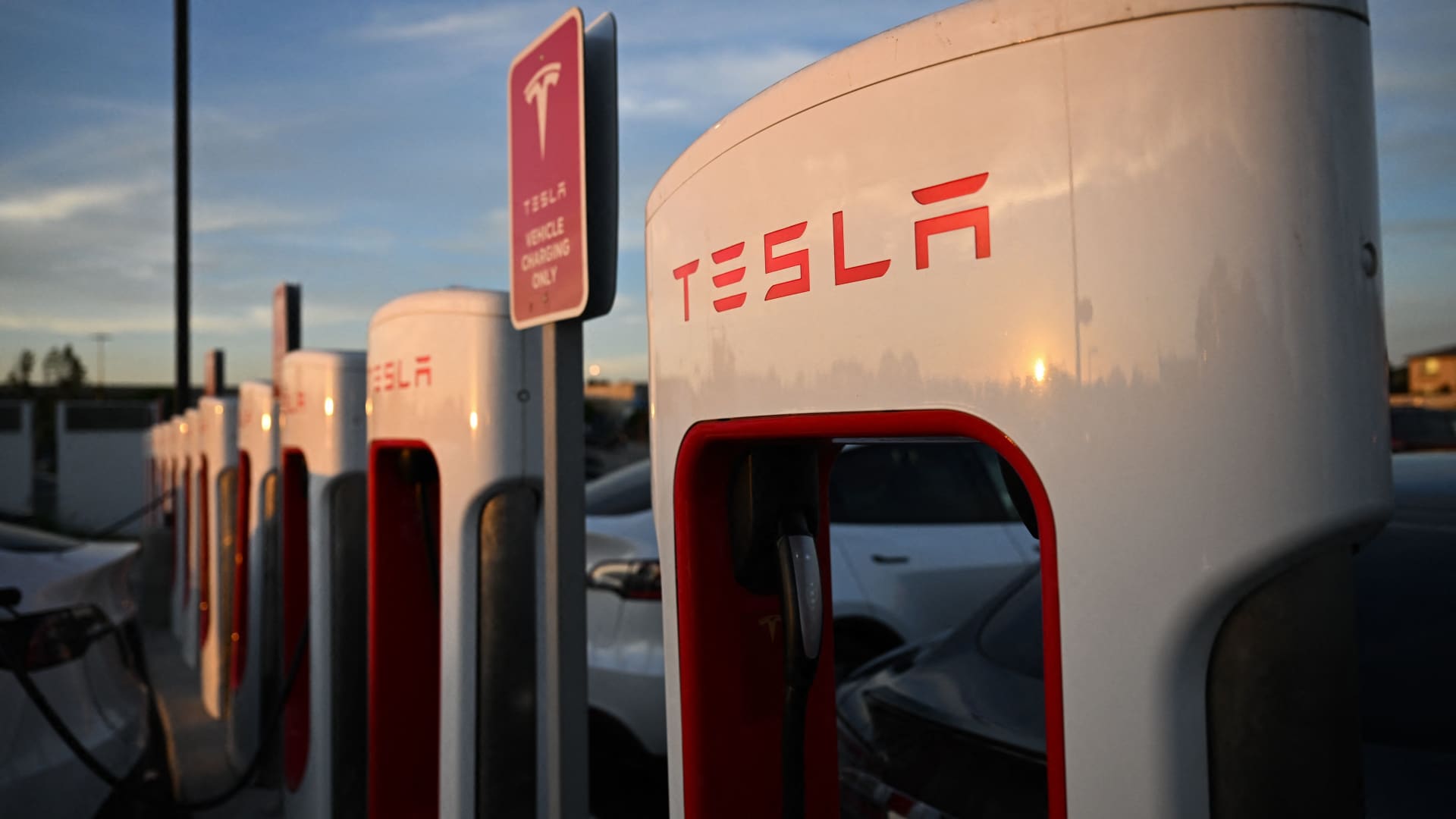The Biden administration wants to see at least 500,000 electric vehicle chargers on US roads by 2030, and announced a slate of initiatives on Wednesday to help make that a reality, including commitments from companies that build and operate charging networks like Tesla, GM, Ford, ChargePoint and others.
All of the companies stand to reap the benefits of federal funding if their planned charging infrastructure projects meet new federal standards, which were also revealed on Wednesday.
As part of this effort, White House officials said, they locked a commitment from Tesla to open thousands of its chargers to electric vehicles made by other manufacturers. Until now in the US, Tesla Supercharging stations have been accessible primarily to drivers of the company’s own cars.
Tesla specifically agreed to make at least 7,500 of its publicly accessible chargers in the US available for use by any compatible EV by the end of 2024. That total will include at least 3,500 of Tesla’s 250-kilowatt Superchargers located along key highway corridors, as well as the slower Level 2 destination chargers that the automaker provides at locations like hotels and restaurants, the officials said.
Tesla also agreed to triple the number of Superchargers in its U.S. network, with new chargers that will be made in Buffalo, NY, the official said. The company has been assembling some of its charging equipment at a facility in Buffalo that was originally intended as a solar panel factory.
Tesla has intended to open up its charging network in the US for years. According to Tesla’s most recent annual financial filing, in November 2021 the company “began to offer Supercharger access to non-Tesla vehicles in certain locations in support of our mission to accelerate the world’s transition to sustainable energy.”
White House infrastructure chief Mitch Landrieu told reporters on Tuesday that Musk was one of many automotive sector CEOs involved in discussions with the White House about charging infrastructure last year.
“He was very open, he was very constructive,” Landrieu said. “And at that time, he said his intent was to work with us to make his network interoperable. Everybody else on the call agreed.”
Landrieu added, “It was critically important to us that everybody be included in the conversation.”
The White House also lauded other automakers and companies, praising a separate deal between General Motors, Pilot Company, and charging network EVGo to install 2,000 fast chargers at Pilot and Flying J centers along U.S. highways.
GM via a separate partnership with FLO, also plans to install up to 40,000 public Level 2 EV chargers in US communities by 2026, which will become part of GM’s Ultium Charge 360 network, and be available to all EV drivers.
Ford has committed to installing DC Fast chargers at 1,920 of the company’s dealerships by January 2024.
Hertz and oil giant BP‘s EV charging unit plan to install thousands of chargers in major U.S. cities for use by Hertz customers and the general public.
Among Wednesday’s announcements, the Departments of Energy and Transportation also revealed new charging standards that “ensure everyone can use the network – no matter what car you drive or what state you charge in.” Among the requirements:
- All new chargers built with federal funds must support the Combined Charging System (CCS) plug standard. The CCS standard is used by most automakers other than Tesla.
- New charging sites built with federal funds will be required to have a minimum number of DC Fast chargers.
- Federally funded chargers must be up and running at least 97% of the time once installed.
- Effective immediately, all federally-funded chargers must be assembled in the U.S., and their steel enclosures must be made in the U.S. By July 2024, at least 55% of the chargers’ components (measured by cost) must be made in the U.S. as well.
- New chargers built with federal funds to be compatible with new user-friendly technologies like “Plug and Charge”, which – as the name suggests — automates the process of paying for the charge.
There are also new rules to help ensure that drivers don’t have to use multiple apps to find and use chargers, by making data on charger locations, pricing, and availability public and available via mapping applications.
But in one omission that will raise questions from staunch environmentalists, the new federally funded EV chargers will not necessarily be powered by clean energy sources.
Officials said it will be “company dependent” whether EV chargers that are federally funded are powered by renewables or “clean electricity,” or simply connected to the existing electrical grid.
Transportation has been responsible for 25% of carbon emissions from human activity globally, according to estimates by the non-profit International Council on Clean Transportation. Much of that pollution comes from tailpipe emissions, but charging with electricity from clean or renewable sources increases the climate benefits of switching to an electric vehicle.
According to environmental impact research by Project Drawdown, compared to gasoline-powered vehicles, emissions drop by 50% when an electric vehicle’s power is drawn from the conventional grid. When powered by solar energy, carbon dioxide emissions from an electric vehicle fall by 95% versus a comparable internal combustion engine vehicle that burns gasoline.
Officials did suggest it will all work out in the long run, however. During the briefing, Energy Secretary Jennifer Granholm emphasized that the President’s goal is to get to a “fully clean electric grid” by 2035.
